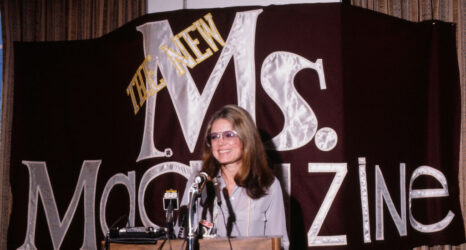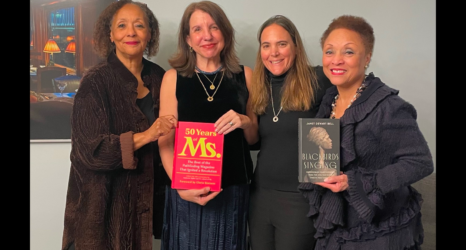In the new issue of Ms. magazine, available on newsstands Feb. 26 and immediately on our new digital platform, we review the new biography Eslanda: The Large and Unconventional Life of Mrs. Paul Robeson by Barbara Ransby. Most of us have heard of singer/actor/activist Paul Robeson, but Ransby reminds us that his wife was remarkable in her own right.
In a just world, Eslanda Cardozo Goode Robeson would be known as a feminist foremother, studied and admired by every schoolgirl. She might have been secretary-general of the United Nations, or U.S. secretary of state. But even in a cruelly unjust world, this remarkable woman managed to participate in the founding of the U.N., write the influential anthropological text African Journey and champion women on the world stage.
Born in 1895 to a family of black professionals, “Essie” earned a chemistry degree from Columbia University and as a very young woman headed a lab at Columbia Presbyterian Hospital, the first African American to do so. At 25, she eloped with a Columbia law student, the budding actor/singer Paul Robeson, and took on roles as tour manager, acting coach and breadwinner while he honed his skills. They made a formidable team. “She used her title as Mrs. Paul Robeson to open doors,” Ransby writes, “but once those doors opened, a smart, pragmatic and fiercely independent woman walked through.”
Despite the demands of managing her husband’s extraordinary career—his title role in Othello and star turn in Show Boat remain iconic—Eslanda developed an international sphere of influence. Often living abroad with her son and mother, she studied at the London School of Economics and traveled constantly, speaking at conferences and reporting for journals. She maintained lasting friendships with Harlem Renaissance writers Langston Hughes and Zora Neale Hurston, independence activists Jawarharlal Nehru and Jomo Kenyatta, anarchist Emma Goldman, the geneticist J.B.S. Haldane, Shirley and W.E.B. Dubois and other leading progressives.
Light-skinned enough to pass for Spanish or Italian in her cosmopolitan circles, Eslanda wholeheartedly claimed herself as one of the world’s people of color. “I feel brown, and I think brown and I am brown” she proclaimed in a speech to the All African Women’s Freedom Movement, a group that, in typical fashion, she had helped to found.
Her marriage frequently in turmoil—Paul had affairs, some lasting for years—and her family often living apart, she took a key role in the international anti-colonial cause, which she strongly linked to “Negro civil rights.” U.S. and British intelligence agencies frowned on this dangerous linkage; they harassed the Robesons for years, confiscating their passports during the Cold War ’50s. Paul was blacklisted, and lack of income from his international tours meant they lost their home. Summoned by Sen. Joseph McCarthy to testify at a Senate hearing on un-American activities, an outraged Eslanda parried every insulting question with wit and vigor. “McCarthy glared,” writes Ransby, and said “that she might have been cited for contempt if she were a man.”
This long overdue biography of a bold scholar-activist emerging from the shadow of her famous husband is a gift, and such are Ransby’s narrative skills that I wept when, in her final pages, the vibrant Essie died, two days shy of 70. Ransby has a history of rescuing historically overlooked black female leaders; a prior biography was of the venerable civil rights activist Ella Baker. This new work is a major contribution to her glorious reclamation project.
Joan Steinau Lester is the author of the Eleanor Holmes Norton biography Fire in My Soul and the novel Black, White, Other.
To read the rest of the latest issue of Ms., visit us here to subscribe to Ms. Digital, the print magazine or both!





